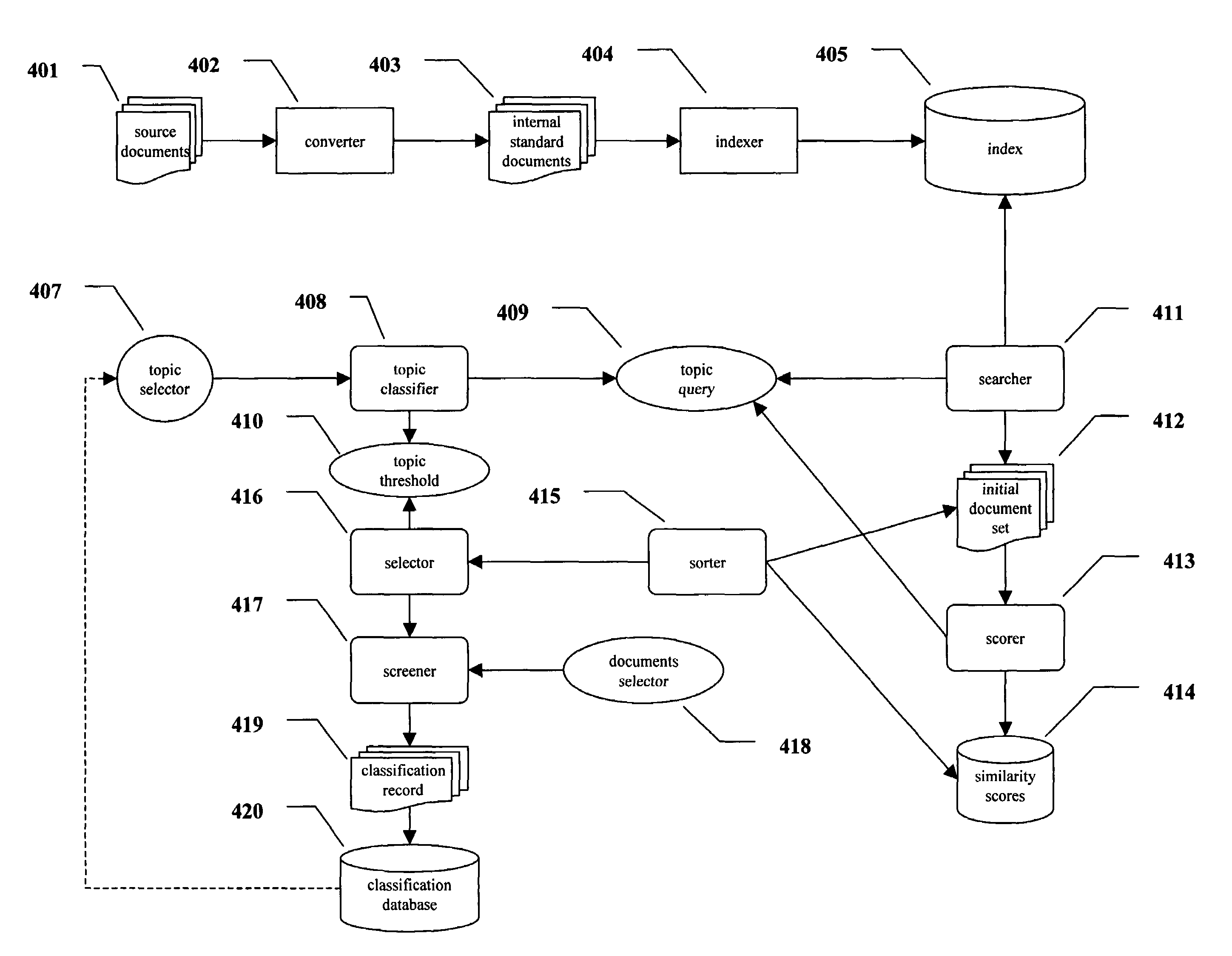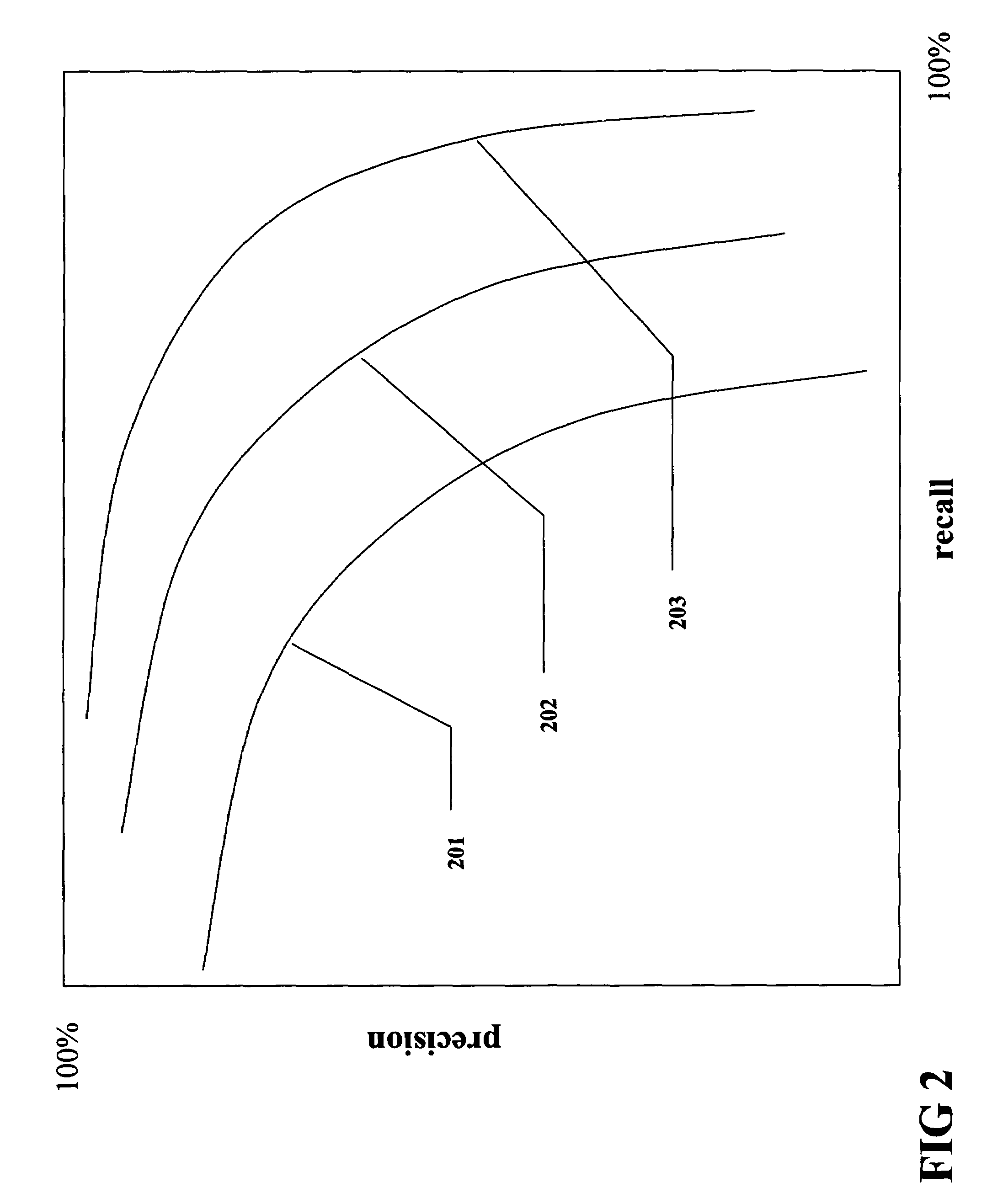System and method for document categorization
a document categorization and document technology, applied in the field of automatic document categorization, can solve the problems of limited leverage of publishers, overloaded news consumers, and fierce competition, and achieve the effect of quick determination of the presence of errors
- Summary
- Abstract
- Description
- Claims
- Application Information
AI Technical Summary
Problems solved by technology
Method used
Image
Examples
Embodiment Construction
[0064]The present invention includes several key characteristics including (a) structure-aware searching, (b) similarity-based relevance scoring, and (c) structure-based relevance boosting.
Structure-Aware Searching:
[0065]This approach takes advantage of a characteristic of some documents such as news articles in which a topic reference in the headlines is likely to be more significant than ones in the sub headline, which is more significant than one in the article summary, which is more significant than one elsewhere in the article.
[0066]The inventive system uses search engine technology that's sophisticated enough to differentiate between these parts (headline, subhead, etc.) of the article.
[0067]The inventive system also takes advantage of the fact that some documents such as news articles often include metadata added by the publisher, such as general categories and topic tags, location within the publication (section, page), publication date, and the like. This publishing metadat...
PUM
 Login to View More
Login to View More Abstract
Description
Claims
Application Information
 Login to View More
Login to View More - R&D
- Intellectual Property
- Life Sciences
- Materials
- Tech Scout
- Unparalleled Data Quality
- Higher Quality Content
- 60% Fewer Hallucinations
Browse by: Latest US Patents, China's latest patents, Technical Efficacy Thesaurus, Application Domain, Technology Topic, Popular Technical Reports.
© 2025 PatSnap. All rights reserved.Legal|Privacy policy|Modern Slavery Act Transparency Statement|Sitemap|About US| Contact US: help@patsnap.com



